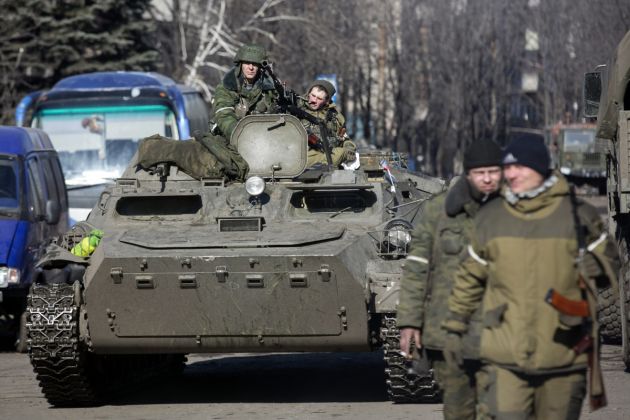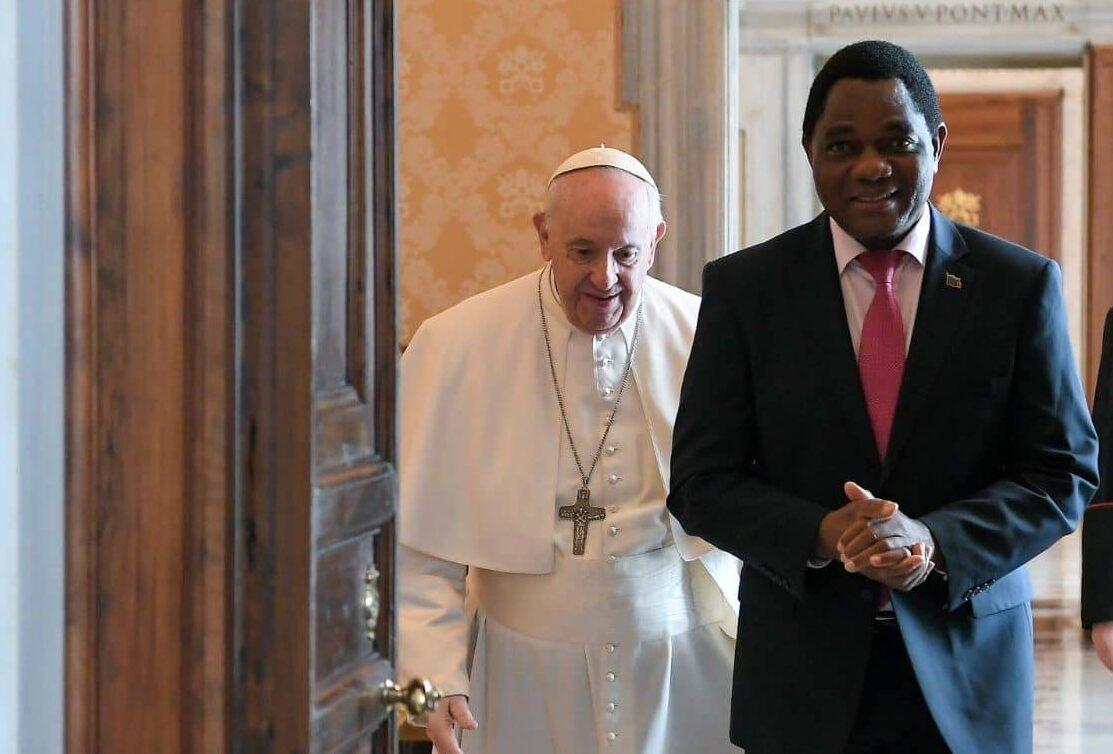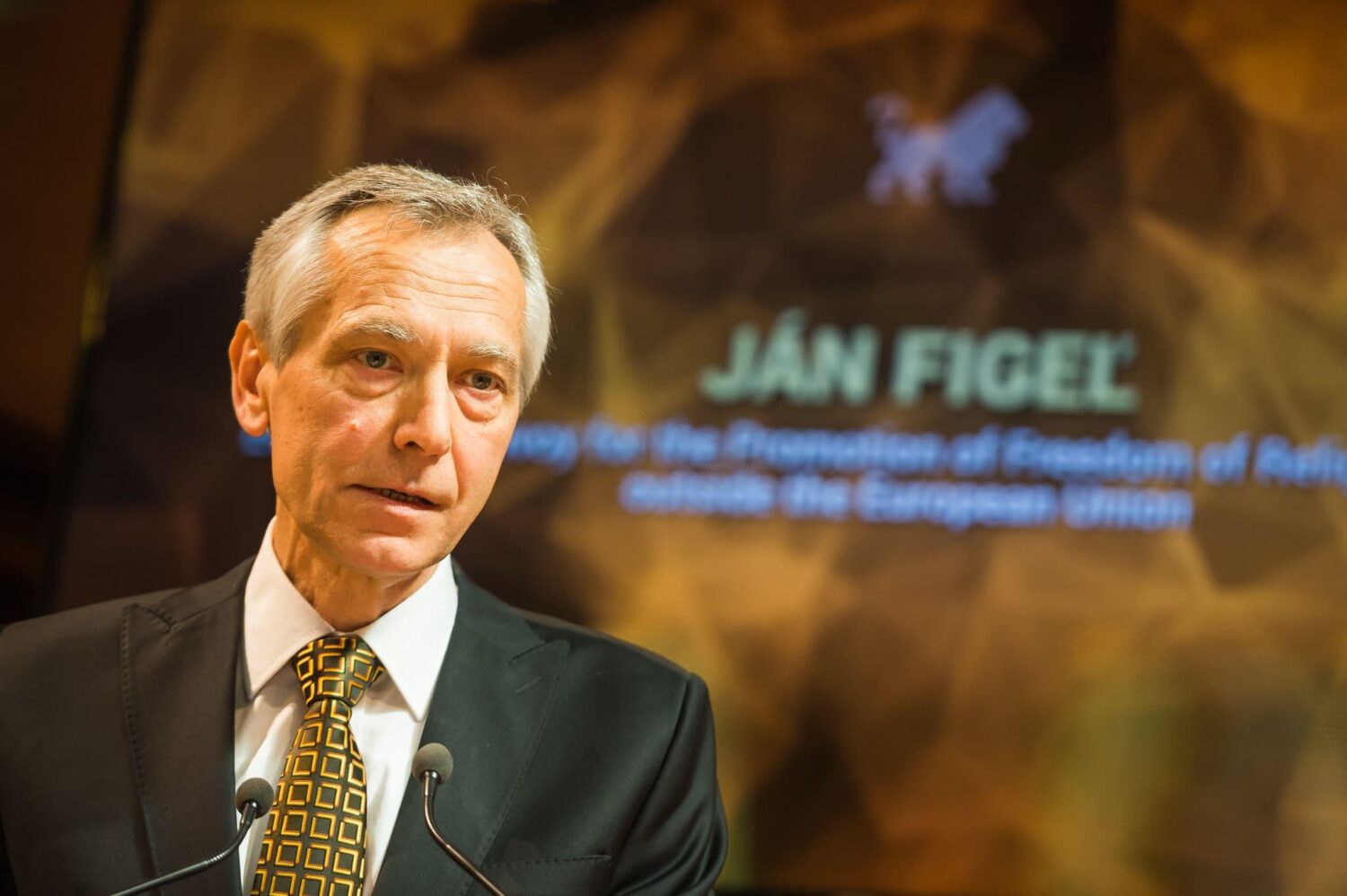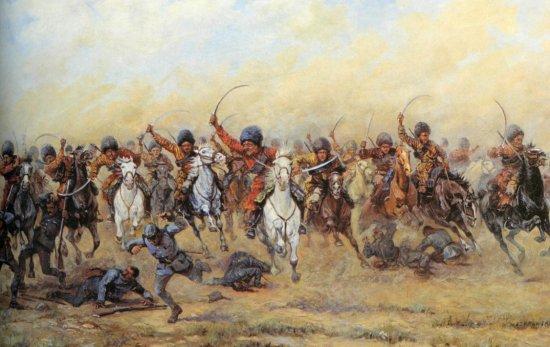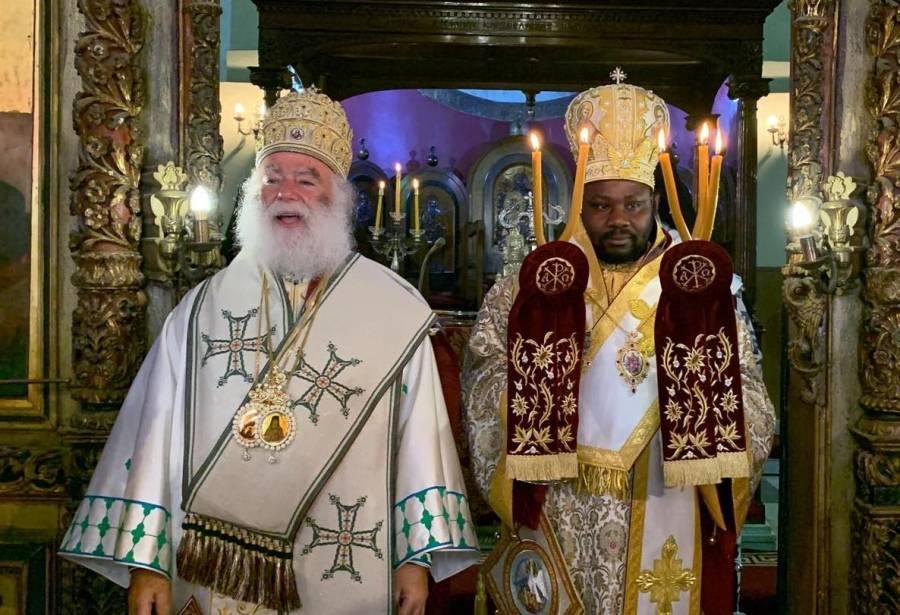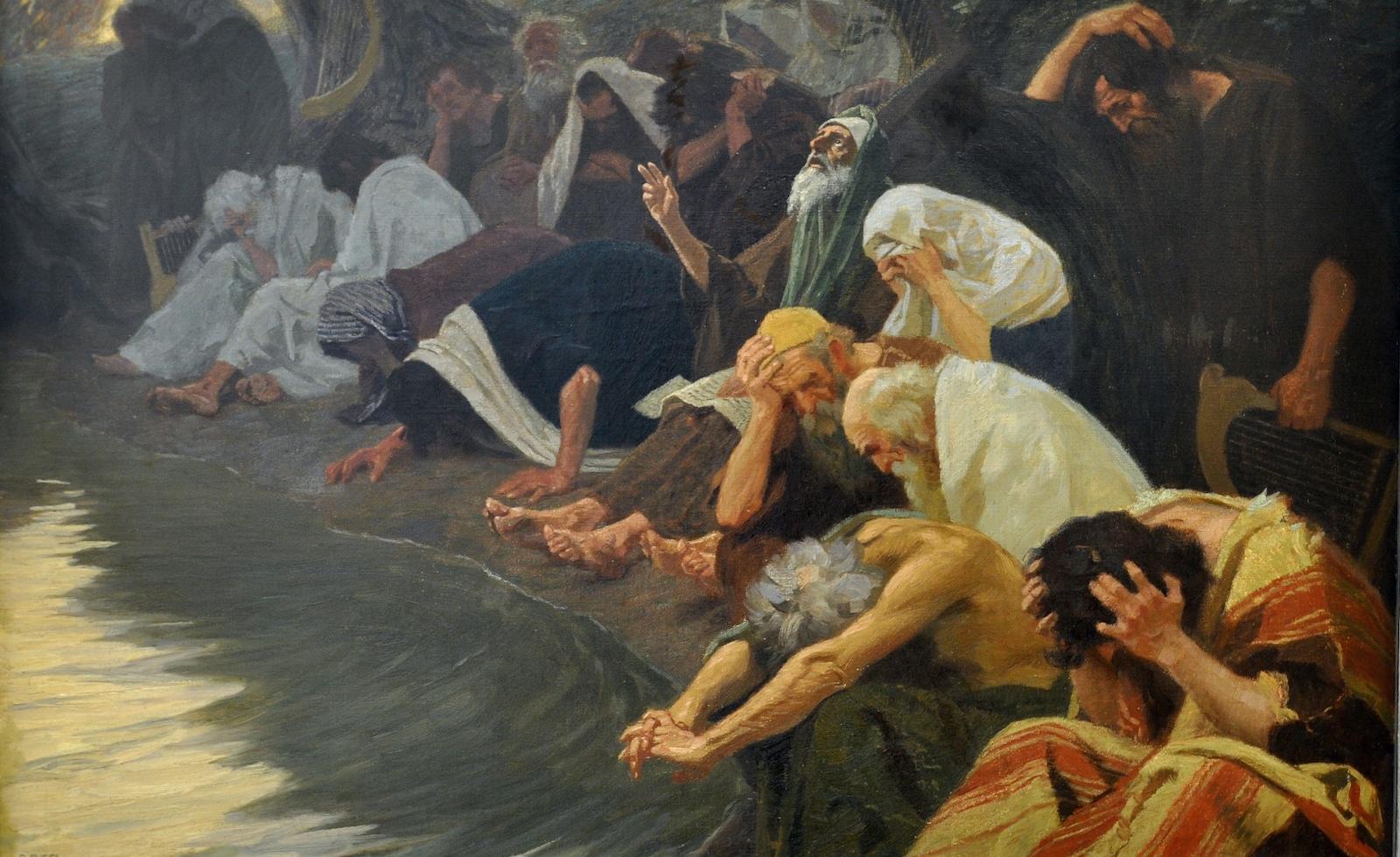Institute for the Study of War, Russia Team
Russia will likely attack Ukraine before February 21, 2022, as we discuss here. The Kremlin has deployed sufficient military forces and set informational conditions to conduct offensive operations including limited incursions into unoccupied Ukraine, a comprehensive air and missile campaign, and large-scale mechanized drives on Kyiv and other major Ukrainian cities.
ISW’s Russia Team is launching a new product line, Ukraine Conflict Updates, in light of this forecast. This daily synthetic product covering key events related to renewed Russian aggression against Ukraine will replace ISW’s previous “Indicators and Thresholds for Russian Military Operations in Ukraine and/or Belarus,” which we maintained from November 12, 2021, through February 17, 2022. That document will no longer be updated.
Key Takeaways February 19
- Russian and Belarusian forces carried out the final day of active tactical exercises as part of the Joint Russian-Belarusian “Union Resolve 2022” exercise, scheduled to end on February 20. Russian forces currently remain scattered across several Belarusian training grounds and will likely require until at least February 20 to concentrate in southern Belarus if Russia intends to leverage them in an attack on Ukraine.
- Russian President Vladimir Putin and Belarusian President Alexander Lukashenko oversaw Russia’s “GROM” nuclear triad exercises, currently being held earlier in the year than previous annual iterations—likely to deter any significant NATO response to possible Russian aggression against Ukraine.
- Chairman of the Russian State Duma (Parliament) Vyacheslav Volodin announced the Duma will hold a session on February 22 to discuss and respond to what the Kremlin is calling a forced mass exodus of Russian citizens from the Luhansk and Donetsk People’s Republics (LNR and DNR).
- The Russian-backed Donetsk and Luhansk People’s Republics began the general mobilization of military-age male citizens amid increasingly frantic claims (amplified by Kremlin media) of an impending Ukrainian offensive against Donbas, including the publication of a faked Ukrainian offensive plan.
- Ukrainian President Volodymyr Zelensky notably left Ukraine to attend the Munich Security Conference in person, and urged Western states to take imminent action against Russian escalations.
- US and NATO officials emphasized unity and collective defense among member states against Russian escalations at the Munich Security Conference in Germany but announced no new policies.
- Chinese Foreign Minister Wang Yi stated Russia’s security concerns should be respected but urged all states to respect Ukraine’s sovereignty, marking a possible break in China’s previous full support for Russia in the current Ukraine crisis.
Key Events February 18, 3pm EST – February 19, 2pm EST
Military Events
Russian President Vladimir Putin and Belarusian President Alexander Lukashenko oversaw Russia’s ongoing “GROM” nuclear triad exercises from the Kremlin situation center on February 19 in a likely effort to deter NATO.[1] The Kremlin typically conducts its annual GROM nuclear triad exercises in early fall and is likely holding them early to deter any NATO response to possible Russian offensive actions against Ukraine. Russian readouts did not specify the nature of Putin or Lukashenko’s roles in the GROM exercises beyond observation.
Russian Air Force elements test-launched Kinzhal hypersonic missiles in unspecified locations. A Russian Northern Fleet submarine in the Barents Sea launched a strategic missile at the Kura Missile Testing Site in Kamchatka Krai. Additional Northern and Black Sea Fleet elements launched Kalibr cruise missiles and Zirkon hypersonic missiles at sea and air targets. Strategic Missile Force elements in the Kapustin Yar test site launched Iskander cruise missiles at unspecified targets. Likely Strategic Missile Force elements at the Plesetsk Cosmodrome in Arkhangelsk Oblast also launched Yars intercontinental missiles at targets in the Kura Missile Test Site, Kamchatka Krai. Unspecified Russian elements also launched cruise missiles from strategic missile carriers at targets in the Kura Missile Test Range in Kamchatka Krai and the Pemboi Missile Test Range in the Komi Republic.
Western Military District Commander Colonel-General Alexander Zhuravlev oversaw field training by the meteorological service of the WMD on February 19.[2] Meteorologists prepared weather reports for aviation flights through the deployment of meteorological stations and mobile autonomous complexes. Servicemen used geostationary satellites to compile weather data and analyzed the hydrometeorological context of the area. This information was used to plan and execute flight exercises. It is unclear why the Russian Ministry of Defense separately reported on Zhuravlev’s attendance at a meteorological exercise. The Russian Ministry of Defense (MoD) last reported Zhuravlev attending exercises by the 1st Guards Tank Army in Moscow on February 10.[3]
Three hundred Russian 49th Combined Arms Army reconnaissance personnel and 60 vehicles conducted a tactical counter-reconnaissance exercise at the Kobu-Bashi Training Ground in Karachay-Cherkessia, Russia on February 19.[4] The Russian reconnaissance units protected Russian units during combat and provided communications, information, and command and control support during the exercise.
Unspecified Russian Southern Military District battalion tactical groups (BTGs) practiced new methods of long-range fire using tank and artillery units at the Prudboy Training Ground, Volgograd Oblast, Russia, on February 19.[5] T-90A tanks and ATGM crews participated in the exercise.
Over 500 operators of the Black Sea Fleet coastal missile systems participated in an exercise to defend the Crimean Peninsula and Caucasian coast from mock missile strikes on February 19.[6] Crews launched missiles at sea targets from designated positional areas and identified surface targets in Crimea and Krasnodar Krai. The exercise was part of a wider series of ongoing Russian naval exercises involving over 10,000 servicemembers.
Russian Activity
Chairman of the Russian State Duma Vyacheslav Volodin announced on February 19 that the Duma will hold a session to discuss and respond to what the Kremlin is calling a forced mass exodus of Russian citizens from the Luhansk and Donetsk People’s Republics (LNR and DNR) on February 22.[7] Duma member Viktor Vodolatsky claimed that nearly 36,000 people have arrived in Rostov from the LNR and DNR, 70 percent of whom volunteered to move.[8] The LNR opened 61 checkpoints to facilitate the evacuation.[9] Twenty-six Russian regions will receive refugees, including the Moscow region, Orlovsk, Tulsk, Kaliningrad, Yaroslav, Bryansk, Astrkhan, and South Ossetia.[10] The Voronezh region was subsequently placed on high alert to accommodate refugee movements.[11] In response to the alleged mass exodus, the United Russia party stated that they are providing support for the DNR and LNR in the form of charities, volunteer organizations, and legal aid.[12]
Russian rhetoric on February 19 increasingly framed the situation as a manifestation of a Ukrainian genocide against Donbas, enabled by the West.[13] Chairman of the State Duma Vyacheslav Volodin accused participants of the Munich Security Conference of ignoring what he claimed is an ongoing genocide against citizens of the Donbas region, and Russian Foreign Ministry spokesperson Maria Zakharova similarly claimed the West is blatantly overlooking ”crimes against humanity” in Donbas.[14] Vice Speaker of Federation Council Konstantin Kosachev additionally accused the United States and its allies of encouraging a Ukrainian offensive against Donbas that is causing a mass exodus of Russian citizens and targets civilian infrastructure of the LNR and DNR.[15]
Kremlin-sponsored media reported that Ukrainian paramilitary groups shelled Rostov Oblast on February 19, possibly to imply that Ukraine may use the Donbas crisis to attack Russia.[16] Russian Police reported an initial explosion in the Mityakinskaya village in Tarasovsky District, Rostov Oblast. The Russian Federal Investigative Committee launched a criminal investigation into another multiple-launch-rocket-system shelling in Mityakinskaya, Rostov Oblast, that reportedly damaged two vacant residential buildings on February 19.[17] The Committee also opened a criminal investigation after Donetsk People’s Republic (DNR) Militia Head Denis Sinenkov’s car exploded on February 18. The DNR accused and detained reported Ukrainian agent Anton Matsanyuk for mining Sinekov’s vehicle. Russian media reported that Matsanyuk admitted to tracking the car and mining it with Ukrainian explosives. Russian media added that Matsanyuk organized a terrorist group to recruit Donetsk residents to carry out provocations in the city.[18]
Russian Foreign Minister Sergey Lavrov and French Foreign Minister Jean-Yves Le Drian discussed the conflict in Donbas during a phone call on February 19.[19] Lavrov reiterated Kremlin claims that the Ukrainian government is hindering progress toward a peaceful solution by failing to abide by the Minsk II Accords, refusing to recognize the Donetsk and Luhansk People’s Republics (DNR and LNR) as legitimate parties in the conflict, and refusing to grant the DNR and LNR special constitutional status within Ukraine. Lavrov accused Ukraine of building up military forces on the line of contact, militarizing the population, and inciting armed provocations in Donbas. Lavrov emphasized the need for international formats like the Normandy Format, of which France is a member, and the lack of acceptable alternatives to the Minsk agreements. Lavrov likely asked Le Drian to pressure Ukraine into engaging in international formats under Russian terms.
Russia’s delegation refused to attend a meeting of the Trilateral Contact Group to discuss de-escalating tensions in eastern Ukraine on February 19.[20] The group’s chair, Organization for Security and Cooperation in Europe (OSCE) representative Mikko Kinnunen, said that Russian representatives “linked their attendance to certain [unspecified] political preconditions.” The Donetsk People’s Republic (DNR) and Luhansk People’s Republic (LNR) delegations also refused to participate in the Trilateral Contact Group meetings on February 18.
Russian President Vladimir Putin issued Russia’s annual callup of military reservists for service in the Armed Forces, Rosgvardia, and state and federal security agencies on February 18—earlier than the normal annual callup in March or April.[21] The decree entered force immediately on February 18 but did not specify when reservists will enter training. The callup is not itself abnormal but has been issued earlier in the year than usual, with most callups issued in March or April.[22] Russian reservists will likely support Russian militarization efforts and force posturing against Ukraine.
Proxy Activity
The Donetsk People’s Republic (DNR) claimed it obtained a Ukrainian plan for a five-day offensive to forcibly regain control of Donbas and push Russian-speaking populations to Russia on February 19.[23] The DNR claimed that Ukrainian forces will strike in three stages, with the Ukrainian 30th Mechanized, 17th Tank, 95th Air Assault, and 26th Artillery Brigades attacking proxy positions from Kramatorsk and Debaltseve, Donetsk Oblast. The DNR added that Ukrainian forces will then advance from Alchevs’k, Luhansk Oblast, and Yenakijeve, Donetsk Oblast, up to the Russian border in three days. The DNR claimed that Ukrainian forces will also launch an offensive from Shyrokyne, Donetsk Oblast, and that Ukrainian sea troops advance from Novoazovs’k to Illovais’k and Ulyanivs’ke in Donetsk Oblast on February 21. The DNR added that Ukrainian forces on the Luhansk front will then move to Khrustalnyi, Luhansk Oblast. The DNR claimed that the Ukrainian 26th, 43rd, and 55th Artillery Brigades will conduct massive artillery, air, and drone strikes against civilian facilities, while establishing a blockade around Donetsk, Luhansk, Horlivka, and Alchevs’k. The DNR added that Ukraine and UK instructors have created misinformation videos featuring an actor playing a Russian defector who admits to chemical weapon terrorist attacks against Ukrainian targets to provide a pretext for Ukrainian invasion.[24]
The Luhansk People’s Republic (LNR) is amplifying reports that Ukrainian forces are attempting to harm LNR and DNR evacuees, claiming that police safely disarmed a mined car under a bridge on an evacuation highway to Russia in Molodohvardiis’k, Luhansk Oblast.[25] The LNR claimed Ukrainian sabotage and reconnaissance groups likely caused at least three gas pipeline explosions in Luhansk, resulting in several fires in the city.[26] The LNR claimed that Ukrainian forces fired 120 mortars in Pervomais’k, Metalist, and Slov’yanoserbs’k, Luhansk Oblast.[27]
The DNR claimed Ukrainian forces wounded an elderly civilian with shelling in Pikuzy, Donetsk Oblast.[28] The DNR accused the Ukrainian 25th Brigade of shelling a water pumping station in Vasylivka, Donetsk Oblast, resulting in loss of electricity and the cessation of the station’s operation.[29] The DNR issued another conflicting report that Ukraine’s 24th Separate Assault unit of the Right Sector damaged the Donetsk Filter Station.[30] The DNR claimed that the inoperability of the station jeopardizes water supplies for over 40 settlements on both sides of the line of contact. The DNR also claimed to receive anonymous information about the mining of two hotels and four residential complexes in Donetsk, Donetsk Oblast.[31] The DNR accused Ukrainian forces of disseminating leaflets among civilians to instigate panic.[32]
The LNR denounced media reports that proxy republics want to abandon the Minsk II Accords but restated proxy disinterest in scheduling any further Trilateral Contact Group meetings considering Kyiv’s provocations.[33] The LNR added that the LNR and DNR will host a Trilateral Contact Group meeting if Ukraine sends specific proposals for final decisions on conflict settlement.
The Donetsk and Luhansk People’s Republics (LNR and DNR) issued general mobilization decrees on February 19.[34] The LNR decree called for a general mobilization of male citizens aged 18 to 55, claiming that the Ukrainian Armed Forces intensified their shelling and military buildup at the line of contact.[35] The DNR similarly adopted a unanimous decree for general mobilization and announced that the DNR government would immediately shift its economy to a wartime footing.[36]
Belarusian Activity
Russian and Belarusian forces carried out the final day of active tactical exercises as part of the Joint Russian-Belarusian “Union Resolve 2022” exercise, scheduled to end on February 20, at various training grounds across Belarus on February 19.[37] Russian forces currently remain scattered across several Belarusian training grounds and will likely need until at least February 20 to concentrate in southern Belarus if Russia intends to leverage them in an attack on Ukraine. Belarusian Defense Minister Viktor Khrenin observed the day’s main exercises at Obuz-Lesnovsky (near Baranovichi in Western Belarus, 90 miles from the Ukrainian border), which included final joint tactical actions of the Belarusian Western Operational Command, the Russian Pacific Fleet Naval Infantry, and joint Belarusian-Russian aviation crews.[38] The Belarusian MoD advertised that over 120 international media representatives attended exercises at Obuz-Lesnovsky in order to underline the Union State’s desire to be transparent and cooperative with the international media.[39] Russian Naval Infantry from the Eastern Military District also practiced tactical airborne landings and helicopter reconnaissance at Obuz-Lesnovsky.[40] The Belarusian MoD reported that Belarusian Signal Corps elements withdrew their forces and assets back to their points of permanent deployment after providing communications support during Union Resolve exercises.[41] An unspecified Belarusian mechanized brigade participated in mock combat at the Gozkhy training ground (Western Belarus, about 175 miles north of the border with Ukraine). An unspecified Belarusian mechanized brigade worked with Russian marines to pursue a mock enemy and restore an advantageous border position at Baranovichi (Western Belarus, about 120 miles north of the Ukrainian border). Joint Belarusian-Russian special forces carried out anti-sabotage and reconnaissance measures at Maryina Gorka (Central Belarus, about 230 miles from the Ukrainian border).
Several Russian units participated in exercises near the Ukrainian border, but the center of gravity of exercises remained in Western Belarus, and Russian units have not deployed to assembly areas in Belarus. Unspecified Belarusian special operations forces and Russian airborne and motorized rifle units practiced restoring combat capacity and conducted live-fire exercises at the Brestsky training ground (Southwestern Belarus, less than 30 miles from the Ukrainian border). Russian missile units carried out unspecified combat duties at Gomel (Southeastern Belarus, less than 30 miles north of the Ukrainian border). Belarusian missile forces carried out reconnaissance and combat in an area controlled by a mock enemy at Pinsk (Southern Belarus, about 40 miles from the Ukrainian border) and redeployed to a new combat area at Polessky (Southern Belarus, about 45 miles from the Ukrainian border).
Ukrainian Activity
Ukrainian President Volodymyr Zelensky urged Western states to take imminent action against the Russian military buildup at the Munich Security Conference (MSC) in Munich, Germany, on February 19.[42] Zelensky called on Western countries to publicize the sanctions they plan to impose on Russia in the event of an escalation and urged countries to make no deals “behind Ukraine’s back.” Zelensky blamed western states for their “indifference” to the Russian military buildup at Ukraine’s border during his speech. Zelensky also invoked the 1994 Budapest Memorandum that granted security assurances for Ukraine‘s territorial integrity from Russia, the United States, and the United Kingdom in exchange for its denuclearization. Zelensky called for a meeting of the four signatory states and stated that a failure to hold such a meeting would put the entire package of measures “in doubt,” possibly insinuating a Ukrainian need to regain nuclear weapons. Zelensky also called on NATO to clarify Ukraine’s accession timeline. Additionally, Zelensky held bilateral meetings with UK Prime Minister Boris Johnson, German Chancellor Olaf Scholz, US Vice President Kamala Harris, and international financial institutions representatives during the visit.[43] Separately, Ukrainian Foreign Minister Dmytro Kuleba participated in the G7 Foreign Ministers meeting at the Munich Security Conference on February 19.[44] Kuleba said Ukraine and the United States would spare no diplomatic effort to protect Ukraine after meeting US State Secretary Antony Blinken.[45] Kuleba also held a meeting with German Foreign Minister Annalena Burbock and French Foreign Minister Jean-Yves Le Drian to discuss Russia’s disinformation campaigns and the security situation in Ukraine.[46]
The Ukrainian government provided several updates on February 19 on continued Russian proxy and propaganda activity to draw Ukraine into a military provocation, including the deployment of Wagner forces to Donbas.[47] The Ukrainian Operational and Tactical Group East claimed on February 19 that Wagner Group operatives are in Donbas to conduct provocative offensives, mainly by detonating explosives in residential buildings.[48] including Defense Council Secretary Oleksiy Danilov, Ukrainian Defense Minister Oleksiy Reznikov, Deputy Minister for the Integration of Occupied Territories Iryna Vereschuk, and Ukrainian Armed Forces Commander-in-Chief Lieutenant General Yevhen Moisyuk visited the Donbas line of contact to further demonstrate Ukraine’s nonaggression, dedication to a political-diplomatic solution, and combat Russian propaganda efforts to portray Ukraine as the aggressor in Donbas.[49] Ukraine’s State Security Service (SBU) said that proxy shelling and Russian propaganda efforts constitute a hybrid war against Ukraine and reiterated that Russian propaganda claims are fake and aim to destabilize Ukraine. The SBU reiterated that Ukraine will not give in to these provocations and that SBU officers remain on high alert against a possible Russian escalation.[50] The Ukraine Defense Ministry also reported that Russian proxy forces in Pikuzy tried to pass off a proxy shelling as Ukrainian on February 19 to further promote Russian propaganda efforts.[51]
US Activity
US Vice President Kamala Harris and Secretary of State Antony Blinken met with several NATO and European leaders at the Munich Security Conference in Munich, Germany, on February 18-19.[52] US Secretary of State Antony Blinken met with French Foreign Minister Jean-Yves Le Drian to discuss ongoing diplomacy with and deterrence against Russia on February 19.[53] US Vice President Kamala Harris met with NATO Secretary General Jens Stoltenberg in Munich on February 18. Harris and Stoltenberg discussed reinforcements to NATO allies, including sending further US troops to Europe and providing $650 million in defense assistance to Ukraine. Harris also met with the leaders of Latvia, Lithuania, and Estonia on February 18. Harris addressed the Munich Security Conference on February 19.[54] Harris said that Russia is directly threatening European security in Ukraine with provocations and disinformation. Harris reaffirmed the US’ commitment to NATO’s Article 5 and the principles of sovereignty and territorial integrity. Harris said the US remains committed to diplomacy, but the US will impose financial sanctions and export controls on Russia and bolster NATO’s eastern flank in the event of an invasion. The US will also target “those who are complicit and those who aid and abet this unprovoked invasion.” Harris announced that the US recently deployed an additional 6,000 troops to Romania, Poland, and Germany, and put an additional 8,500 troops in the US on a heightened state of readiness. Harris concluded that NATO remains unified in the face of Russian aggression.
US Defense Secretary Lloyd Austin visited Poland and Lithuania on February 18-19 to discuss defense cooperation, arms sales to Poland, and deterring Russian aggression.[55] Austin held one-on-one meetings with Polish President Andrzej Duda and Polish Defense Minister Mariusz Blaszczak to discuss military cooperation and Russia’s military activities in and around Ukraine and Belarus in Warsaw, Poland, on February 18. Blaszczak thanked Austin for reinforcing NATO’s eastern flank by deploying additional US troops in Poland.[56] Austin announced that the US Defense Department approved the sale of 250 M1A2 Abrams tanks to the Polish Armed Forces.[57] Austin traveled to Vilnius, Lithuania to meet with Estonian Defense Minister Kalle Laanet, Latvian Defense Minister Artis Pabriks, and Lithuanian Foreign Minister Gabrielius Landsbergis to discuss Russia’s military buildup and Baltic requests for additional US force deployments to the region on February 19.[58] Lithuanian President Gitanas Nauseda requested the US deploy additional troops to the region following the meeting.
US President Joe Biden discussed coordinated responses to the Ukraine crisis with transatlantic leaders by phone on February 18.[59] Biden spoke with the leaders of Canada, France, Germany, Italy, Poland, Romania, the UK, the European Commission, and NATO. Biden emphasized that the United States and its NATO allies are “in lockstep” and that the crisis has enhanced the “determination, unity, and resolve” of the European Union and NATO. Biden decried Russia’s disinformation campaign as an attempt to falsely justify aggression against Ukraine. Biden condemned the buildup of Russian troops around Ukraine’s borders and emphasized US and allied resolve to defend NATO territory and impose economic sanctions should Russia engage in aggressive action against Ukraine. Biden reiterated that NATO will not send troops to fight in Ukraine but reaffirmed their commitment to Ukrainian sovereignty and their support for the Ukrainian population. Biden said that Secretary of State Antony Blinken is scheduled to meet with Russian Foreign Minister Sergey Lavrov on February 24 at an unspecified location in Europe but warned that the door to diplomacy will close if Russia engages in military action before then.
US Secretary of Defense Lloyd Austin said Russia could decide to attack Ukraine “in short order” on February 18.[60] Austin said that Russia is prepared to “conduct a successful invasion.” Austin continued that this is likely not a bluff due to the mustering of combat aviation, medical support, and logistical support.
NATO and EU Activity
NATO Secretary-General Jens Stoltenberg condemned Russia’s continued military buildup near Ukraine’s borders and discussed NATO’s diplomatic proposals to Russia at the Munich Security Conference in Munich, Germany, on February 19.[61] Stoltenberg participated in a session at the Munich Security Conference alongside several other European leaders on February 19. Stoltenberg emphasized NATO’s readiness to engage in “substantive dialogue” with Moscow and called for Russia to withdraw its forces from Ukraine’s borders during his speech. Stoltenberg said he reiterated his offer to host new NATO-Russia Council meetings to Russian Foreign Minister Sergey Lavrov on February 17 and gave Lavrov several written proposals on increasing transparency of military activities and engaging on arms control. Stoltenberg also criticized China for the first time for joining Russia’s public calls to prevent NATO’s expansion at a time of rising “strategic competition” and reiterated the alliance’s unity to defend and protect all member states.
European Union and NATO members emphasized their unity and resolve in opposing Russian aggression and supporting Ukraine during the Munich Security Conference in Munich, Germany, from February 18-19.[62] Bilateral meetings between EU and NATO member states focused on the regional security implications of Russia’s military deployments to Belarus and Ukraine‘s border.[63] European Commission President Ursula von der Leyen reaffirmed NATO and European opposition to Russia’s military buildup and called on Moscow to engage in dialogue to peacefully resolve the situation.[64] Leyen and German Foreign Minister Annalena Baerbock emphasized Europe’s commitment to decreasing its dependency on Russian natural gas. Baerbock announced that Germany is prepared to pause the Nord Stream 2 project if Russia attacks Ukraine.[65] European leaders stated the European Commission, the United States, the United Kingdom, and Canada have developed a robust package of economic sanctions to impose on Russia should Russia invade Ukraine and that an invasion would prompt political, economic, and strategic consequences.[66] French and German Foreign Ministers Jean-Yves Le Drian and Annalena Baerbock condemned ceasefire violations in the Donbas and expressed concern about Russia staging incidents to create a pretext for military escalation.[67]
Other International Organization Activity
N/A
Individual Western Allies’ Activity
The Group of Seven (G7) foreign ministers reaffirmed their commitment to Ukrainian sovereignty and condemned Russian aggression on February 19.[68] The foreign ministers urged Russia to withdraw military forces from Ukraine’s borders, engage in diplomacy, and fulfill commitments to implement the Minsk Agreements in a joint statement. The G7 foreign ministers also threatened financial and economic sanctions against Russia if Russia pursues further military aggression against Ukraine.
Estonia, France, and Germany issued warnings for citizens to avoid travel to Ukraine and for citizens in Ukraine to leave immediately due to escalating Russian military threats on February 19.[69] NATO additionally relocated staff from Kyiv to offices in Lviv and Brussels on February 19.[70] German Airline Lufthansa additionally announced on February 19 that it will suspend flights to Kyiv, Ukraine between February 21 and 28 but is maintaining flights to Lviv in Western Ukraine as of February 19.[71]
The UK government assessed on February 18 that Russia was involved in a February 15 and 16 cyberattack on Ukraine.[72] Likely Russian hackers conducted a distributed denial of service (DDoS) cyberattack against the Ukrainian Defense Ministry (MoD), Ukrainian banks, and Ukrainian non-profit organizations on February 15. The UK stated that Russia’s Main Intelligence Directorate was involved in the DDoS attacks against Ukraine. The UK said the attack demonstrates Russia’s continued aggression and disregard for Ukrainian sovereignty.
UK Foreign Secretary Liz Truss attended an Organization for Security and Cooperation in Europe (OSCE) meeting on Ukraine and called for de-escalation and dialogue on February 18.[73] Truss criticized Russia’s decision to not attend the OSCE meeting on Ukraine on February 18. Truss called on Russia to engage in dialogue and withdraw troops from Ukraine’s border. Ukraine previously requested the February 18 meeting with all participating OSCE states, citing ”unusual military activities” by Russia.[74] The Kremlin claimed its drills were part of combat training plans and declined the invite.[75]
Other International Activity
Chinese Foreign Minister Wang Yi said that implementing the 2015 Minsk II Agreement is the only way out of the Ukraine crisis and stated that all states’ sovereignty—including Ukraine’s—must be respected in a possible rebuke to Russia in a video address to the Munich Security Conference on February 19.[76] Yi stated that Russian concerns, including on eastward NATO expansion, should be heeded but that Ukraine should not be a frontline for conflict. Yi added that Ukraine’s sovereignty and territorial integrity must be respected and protected under a multilateral system. Yi criticized “certain major countries” for stoking confrontation by warning of an imminent invasion.
[1] https://kremlin dot ru/events/president/news/67814; dot ru/news_page/country/more.htm?id=12409684@egNews
[2] https://function.mil dot ru/news_page/country/more.htm?id=12409627@egNews
[3] https://function dot mil.ru/news_page/country/more.htm?id=12408108@egNews.
[4] https://function.mil dot ru/news_page/country/more.htm?id=12409649@egNews
[5] https://function.mil dot ru/news_page/country/more.htm?id=12409647@egNews
[6] https://function.mil dot ru/news_page/country/more.htm?id=12409597@egNews
[7] https://tass dot ru/politika/13770417.
[8] https://tass dot ru/obschestvo/1376647.
[9] https://tass dot ru/mezhdunarodnaya-panorama/13766431.
[10] https://tass dot ru/obschestvo/13765485; https://tass dot ru/obschestvo/13767237 etc https://tass dot ru/obschestvo/13767219 https://tass dot ru/obschestvo/13767763; https://tass dot ru/obschestvo/13768633; https://tass dot ru/obschestvo/13766839; https://tass dot ru /obschestvo/13766405; https://tass dot ru/obschestvo/13766361.
[11] https://tass dot ru/obschestvo/13768235; https://tass dot ru/obschestvo/13770253.
[12] https://tass dot ru/politika/13767933; https://tass dot ru/obschestvo/13769861.
[13] https://tass dot ru/politika/13770417.
[14] https://tass dot ru/politika/13764037.
[15] https://tass dot ru/politika/13765283.
[16] https://tvzvezda dot ru/news/20222191056-cXDj5.html; https://tass dot ru/politika/13768359.
[17] https://tvzvezda dot ru/news/20222191056-cXDj5.html; https://tass dot ru/proisshestviya/1376997.
[18] https://tass dot ru/mezhdunarodnaya-panorama/13769283.
[19] https://mid dot ru/ru/foreign_policy/news/1799496/
[20] https://www.cnn.com/europe/live-news/ukraine-russia-news-02-19-22-intl/h….
[21] https://publication dot pravo.gov.ru/Document/View/0001202202180067; https://glavcom dot ua/ru/news/putin-prikazal-sozvat-voennye-rezervy-na-sobraniya-823168.html.
[22] https://tass dot ru/obschestvo/13761793.
[23] https://ria dot ru/20220219/dnr-1773765060.html; https://tass dot ru/mezhdunarodnaya-panorama/13766535.
[24] https://tass dot ru/mezhdunarodnaya-panorama/13770185.
[25] https://tass dot ru/mezhdunarodnaya-panorama/13769219; https://tass dot ru/proisshestviya/13769581.
[26] https://tass dot ru/proisshestviya/13766391; https://tass dot ru/mezhdunarodnaya-panorama/13766181.
[27] https://tass dot ru/mezhdunarodnaya-panorama/13764003
[28] https://tass dot ru/proisshestviya/13764775.
[29] https://tass dot ru/mezhdunarodnaya-panorama/13764341.
[30] https://tass dot ru/mezhdunarodnaya-panorama/13769733.
[31] https://tass dot ru/mezhdunarodnaya-panorama/13768975.
[32] https://tass dot ru/mezhdunarodnaya-panorama/13765253.
[33] https://tass dot ru/mezhdunarodnaya-panorama/13766465.
[34] https://tass dot ru/mezhdunarodnaya-panorama/13764287.
[35] https://glava-lnr dot info/sobytiya/glava-lnr/zayavlenie-glavy-luganskoy-narodnoy-respubliki-leonida-pasechnika-16.
[36] https://dnronline dot su/narodnyj-sovet-utverdil-ukaz-glavy-dnr-o-provedenii-obshhej-mobilizacii-2/.
[37] https://www.mil dot by/ru/news/144770/.
[38] https://www.mil dot by/ru/news/144770/.
[39] https://www.mil dot by/ru/news/144789/.
[40] https://function.mil dot ru/news_page/country/more.htm?id=12409618@egNews.
[41] https://vayar.mil dot by/news/144771/.
[42] https://www dot president.gov.ua/news/vistup-prezidenta-ukrayini-na-58-j-myunhenskij-konferenciyi-72997; https://www dot president.gov.ua/news/ukrayina-iniciyuye-provedennya-konsultacij-u-mezhah-budapesh-73001; https://www dot president.gov.ua/news/shodo-uchasti-glavi-derzhavi-u-myunhenskij-bezpekovij-konfer-72993; . https://www.cnn.com/europe/live-news/ukraine-russia-news-02-19-22-intl/h….
[43] https://www.whitehouse.gov/briefing-room/speeches-remarks/2022/02/19/rem….
[44] https://mfa dot gov.ua/news/dmitro-kuleba-vzyav-uchast-u-zustrichi-glav-mzs-krayin-grupi-semi-u-myunheni-partneri-pidtrimuyut-ukrayinu-v-protidiyi-rosijskij-agresiyi.
[45] https://twitter.com/SecBlinken/status/1495040043483910145?s=20&t=BxtAHFz….
[46] https://mfa dot gov.ua/news/dmitro-kuleba-skoordinuvav-iz-glavami-mzs-nimechchini-ta-franciyi-podalshi-kroki-zadlya-deeskalaciyi-situaciyi-na-donbasi; https://mfa dot gov.ua/news/dmitro-kuleba-vzyav-uchast-u-zustrichi-glav-mzs-krayin-grupi-semi-u-myunheni-partneri-pidtrimuyut-ukrayinu-v-protidiyi-rosijskij-agresiyi.
[47] https://www dot president.gov.ua/news/ukrayina-hoche-miru-j-ne-maye-namiru-prosuvatisya-na-okupova-72989 ; dot gov.ua/news/2022/02/19/rosijski-okupanti-znovu-pochali-vikoristovuvati-stari-metodi-zdijsnennya-provokaczij/ ; https://www dot mil.gov.ua/news/2022/02/19/signal-pro-vidsutnist-bud-yakih-agresivnih-namiriv-z-boku-ukraini-u-rajon-oos-pribula-grupa-uryadovcziv-narodnih-deputativ-zhurnalistiv/ ; https://ssu dot gov.ua/novyny/ofitsiina-zaiava-sbu ; https://www.facebook.com/101710131254736/posts/661359668623110/?d=n.
[48] https://www.facebook.com/101710131254736/posts/661359668623110/?d=n.
[49] https://www dot mil.gov.ua/news/2022/02/19/signal-pro-vidsutnist-bud-yakih-agresivnih-namiriv-z-boku-ukraini-u-rajon-oos-pribula-grupa-uryadovcziv-narodnih-deputativ-zhurnalistiv/.
[50] https://ssu dot gov.ua/novyny/ofitsiina-zaiava-sbu.
[51] https://www.mil dot gov.ua/news/2022/02/19/rosijski-okupanti-znovu-pochali-vikoristovuvati-stari-metodi-zdijsnennya-provokaczij/.
[52] https://www.whitehouse.gov/briefing-room/press-briefings/2022/02/18/back….
[53] https://www.state.gov/secretary-blinkens-meeting-with-french-foreign-min….
[54] https://www.whitehouse.gov/briefing-room/speeches-remarks/2022/02/19/rem… https://www.nytimes.com/2022/02/19/world/europe/kamala-harris-ukraine-ru….
[55] https://www.defense.gov/News/Releases/Release/Article/2940194/readout-of….
[56] https://www.defense.gov/News/Transcripts/Transcript/Article/2940543/secr….
[57] https://www.gov.pl/web/national-defence/us-department-of-defence-has-app….
[58] https://www.defense.gov/News/Releases/Release/Article/2941265/readout-of….
[59] https://www.whitehouse.gov/briefing-room/speeches-remarks/2022/02/18/rem… https://www.whitehouse.gov/briefing-room/statements-releases/2022/02/18/…
[60] https://www.cnn.com/europe/live-news/ukraine-russia-news-02-19-22-intl/h….
[61] https://www.nato.int/cps/en/natohq/opinions_192204.htm?selectedLocale=en.
[62] https://www.nato.int/cps/en/natohq/opinions_192204.htm?selectedLocale=en; https://www.msb.gov.tr/SlaytHaber/1822022-45443.
[63] https://urm.lt/default/en/news/lithuanias-foreign-minister-gabrielius-la….
[64] https://www.nato.int/cps/en/natohq/opinions_192204.htm?selectedLocale=en.
[65] https://www.nytimes.com/live/2022/02/18/world/ukraine-russia-news/ukrain….
[66] https://www.nytimes.com/live/2022/02/19/world/ukraine-russia-news/german….
[67] https://www.diplomatie.gouv.fr/en/country-files/ukraine/situation-in-ukr… https://www.auswaertiges-amt.de/en/newsroom/news/-/2512434.
[68] https://www.diplomatie.gouv.fr/en/country-files/ukraine/situation-in-ukr….
[69] https://vm.ee/en/news/updated-travel-advice-ukraine-and-russia; .https://twitter.com/SFischer_EU/status/1495035054766137344?s=20&t=aSz6KQ….
[70] https://en dot interfax.com.ua/news/general/799750.html.
[71] https://www.washingtonpost.com/world/2022/02/19/russia-ukraine-updates/#…
[72] https://www.gov.uk/government/news/uk-assess-russian-involvement-in-cybe….
[73] https://www.gov.uk/government/news/foreign-secretary-statement-on-russia….
[74] https://twitter.com/PLinOSCE/status/1494259112082825217?s=20&t=drmz020S3….
[75] https://tass dot com/world/1406209; https://tass dot com/world/1405163.
[76] https://news.cgtn dot com/news/2022-02-19/Wang-Yi-attends-Munich-Security-Conference-via-video-link-17MCPuu6eti/index.html; https://www.washingtonpost.com/world/2022/02/19/russia-ukraine-updates/#….

